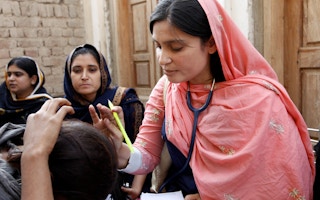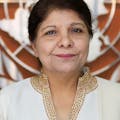Inequality is increasing in Asia and the Pacific. Our region’s remarkable economic success story belies a widening gap between rich and poor. A gap that’s trapping people in poverty and, if not tackled urgently, could thwart our ambition to achieve sustainable development. This is the central challenge heads of state and government will be considering this week at the Economic and Social Commission for Asia and the Pacific (ESCAP). A strengthened regional approach to more sustainable, inclusive growth must be this Commission’s outcome.
It’s imperative, because ESCAP’s Sustainable Development Goal Progress Report shows that at the current rate of progress, Asia and the Pacific will fall short of achieving the UN’s 2030 Agenda. There has been some welcome progress, including in some of the least developed countries of our region. Healthier lives are being led and wellbeing has increased. Poverty levels are declining, albeit too slowly. But only one SDG, focused on achieving quality education and lifelong learning, is on track to be met.
In several critical areas, the region’s heading in the wrong direction. Environmental stewardship has fallen seriously short. The health of our oceans has deteriorated since 2015. On land, our ecosystems’ biodiversity is threatened. Forest conservation and the protection of natural habitats has weakened. Greenhouse gas emissions are still too high. But it’s the widening inequalities during a period of robust growth that are particularly striking.
Wealth has become increasingly concentrated. Inequalities have increased both within and between countries. Over thirty years, the Gini coefficient increased in four of our most populous countries, home to over 70 per cent of the region’s population. Human, societal and economic costs are real. Had income inequality not increased over the past decade, close to 140 million more people could have been lifted out of poverty. More women would have had the opportunity to attend school and complete their secondary education. Access to healthcare, to basic sanitation or even bank accounts would have been denied to fewer citizens. Fewer people would have died from diseases caused by the fuels they cook with. Natural disasters would have wrought less havoc on the most vulnerable.
“
The uncomfortable truth is that inequality runs deep in many parts of Asia and the Pacific. There’s no silver bullet, no handy lever we can reach for to reduce it overnight.
The uncomfortable truth is that inequality runs deep in many parts of Asia and the Pacific. There’s no silver bullet, no handy lever we can reach for to reduce it overnight. But an integrated, coordinated approach can over time return our economies and our societies to a sustainable footing. Recent ESCAP analysis provides recommendations on how to do just that.
At their heart is a call to in invest in our people: to improve access to healthcare and education.
Only a healthy population can study, work and become more prosperous. The universal basic healthcare schemes established by Bhutan and Thailand are success stories to build on. Expanding social protection to low income families through cash transfers can also help underpin a healthy society.
Increasing investment in education is fundamental to both development and equality. Here the key to success is making secondary education genuinely accessible and affordable, including for those living in rural areas. Where universal access has been achieved, the focus must be on improving quality. This means upskilling teachers and improving curricula, and tailoring education to future labour markets and new technologies.
Equipping people to exploit frontier technologies is becoming more important by the minute. Information and Communication Technology (ICT) is a rapidly expanding sector. It can quicken the pace of development. But it is also creating a digital divide which must be bridged. So investment in ICT infrastructure is key, to support innovative technologies and ensure no one is left behind. Put simply, we need better broadband access across our region. Geography can’t determine opportunity.
This is also true when it comes to tackling climate change, disasters and environmental degradation. We know these hazards are pushing people back into poverty and can entrench inequality. In response, we need investment to help people to adapt in the region’s disaster hotspots: targeted policies to mitigate the impacts of environmental degradation on those most vulnerable, particularly air pollution. Better urban planning, regular school health check-ups in poorer neighborhoods, and legislation guaranteeing the right to a clean, safe and healthy environment into constitutions should be part of our response.
The robust growth Asia and the Pacific continues to enjoy, gives us an opportunity to take decisive action across all these areas. But for this to happen, fiscal policy needs to be adjusted. More effective taxations systems would increase the tax take, and better governance would increase people’s willingness to contribute. Public expenditure could then be made more efficient and progressive, the proceeds of growth shared more widely, and inequalities reduced.
My hope is that leaders will seize the moment, strengthen our commitment to fighting inequality on all fronts and put us back on track to sustainable development in Asia and the Pacific.
Shamshad Akhtar is the Under-Secretary-General of the United Nations and Executive Secretary of Economic and Social Commission for Asia and the Pacific (ESCAP).











